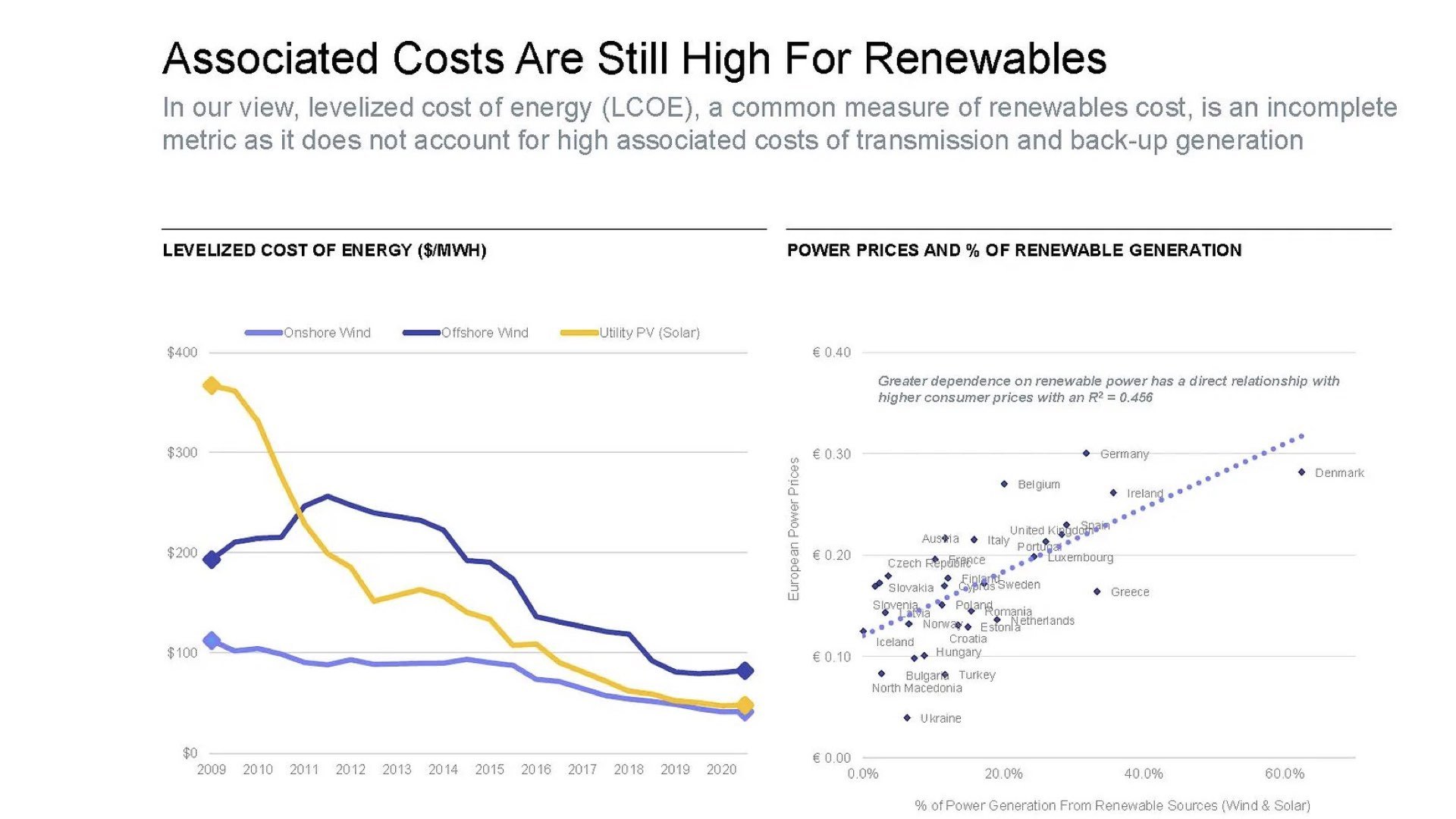Understanding The Landscape Of Nuclear Litigation

Table of Contents
Types of Nuclear Litigation
Nuclear litigation encompasses a wide range of legal actions stemming from various aspects of the nuclear lifecycle. These cases often involve significant financial stakes and complex scientific and technical evidence.
Accidents and Incidents
Litigation following nuclear accidents like Chernobyl (1986) and Fukushima (2011) has set numerous legal precedents. These cases often involve claims for personal injury, property damage, and environmental remediation on a massive scale.
- Landmark Cases: The Chernobyl disaster led to numerous international lawsuits, highlighting the challenges of cross-border litigation and establishing compensation schemes. Similarly, the Fukushima accident resulted in significant litigation concerning the long-term health effects of radiation exposure.
- Causation Challenges: Proving a direct causal link between radiation exposure and specific health problems is a major hurdle in nuclear accident litigation. Latency periods between exposure and the manifestation of health effects complicate matters.
- International Legal Frameworks: International conventions, such as the Vienna Convention on Civil Liability for Nuclear Damage, play a crucial role in resolving cross-border disputes and establishing liability frameworks. However, navigating these international legal frameworks adds another layer of complexity to these cases.
- Governmental Roles: Government agencies often play a significant role, both in regulating the nuclear industry and in responding to litigation, often acting as defendants or overseeing compensation programs.
Regulatory Non-Compliance
Legal actions against nuclear power plant operators for violating safety regulations are another significant aspect of nuclear litigation. These violations can lead to substantial fines, operational restrictions, and substantial liability for damages.
- Regulatory Breaches: Examples include failures to maintain equipment, inadequate safety protocols, and improper handling of radioactive materials. The Nuclear Regulatory Commission (NRC) in the United States, and equivalent bodies in other countries, play a critical role in enforcing regulations and investigating breaches.
- Enforcement Actions: Regulatory bodies can impose significant civil penalties, order operational changes, or even initiate license suspension or revocation proceedings.
- Impact on Public Trust: Regulatory non-compliance can severely erode public trust in the nuclear industry, leading to heightened scrutiny and increased litigation.
Waste Disposal and Decommissioning
Lawsuits related to the handling, transportation, and storage of nuclear waste, as well as the decommissioning of nuclear facilities, present unique challenges. These cases often involve concerns about long-term environmental impacts and the liability of future generations.
- Long-Term Waste Management: The safe and secure management of nuclear waste for thousands of years poses a significant legal and ethical challenge. Liability for potential future environmental damage and remediation costs is a central issue.
- Decommissioning Costs: The costs associated with decommissioning nuclear power plants can be substantial, leading to disputes over liability and responsibility for these expenses.
- Environmental Impact Assessments: Rigorous environmental impact assessments are crucial in evaluating the potential risks and liabilities associated with waste disposal and decommissioning projects.
Key Players in Nuclear Litigation
Understanding the key players involved in nuclear litigation is essential to comprehending the dynamics of these complex legal battles.
Plaintiffs
Plaintiffs in nuclear litigation can range from individuals suffering from radiation-related illnesses to communities affected by environmental contamination, and even governmental entities or environmental organizations.
- Challenges in Representation: Representing large groups of plaintiffs, such as in class action lawsuits, presents significant challenges, including coordinating claims, managing evidence, and ensuring equitable compensation.
- Expert Witness Testimony: Access to qualified scientific and medical experts is crucial for proving causation and assessing damages.
- Funding Mechanisms: Securing funding for lengthy and complex litigation can be a significant obstacle for plaintiffs.
Defendants
Defendants in nuclear litigation typically include nuclear power plant operators, government agencies responsible for regulation and oversight, contractors involved in construction or operation, and waste disposal companies.
- Insurance Coverage: Nuclear liability insurance plays a crucial role in mitigating the financial risks faced by defendants. However, the extent of coverage and the complexities of insurance policies often become key issues in litigation.
- Deep Pockets Argument: Plaintiffs often target entities with substantial financial resources, employing a "deep pockets" strategy to ensure adequate compensation.
- Defensive Strategies: Defendants employ various strategies, including challenging causation, contesting damages, and raising procedural defenses.
Role of Experts
Scientific and technical experts play a critical role in nuclear litigation, providing crucial evidence regarding causation, assessing damages, and interpreting complex scientific data.
- Expert Witness Types: Experts in fields such as radiation biology, epidemiology, and engineering are frequently involved in these cases.
- Establishing Scientific Consensus: Reaching a consensus on complex scientific issues can be challenging, leading to disputes over the admissibility of expert testimony.
- Admissibility of Evidence: The admissibility of expert testimony is often contested, requiring careful consideration of scientific methodology and relevance to the case.
Challenges and Trends in Nuclear Litigation
Several key challenges and emerging trends shape the landscape of nuclear litigation.
Proving Causation
Establishing a direct causal link between radiation exposure and specific health problems remains a significant challenge due to several factors.
- Latency Periods: The time lag between radiation exposure and the onset of health effects can make it difficult to establish causality.
- Multiple Contributing Factors: Health problems may be caused by multiple factors, making it difficult to isolate the role of radiation exposure.
- Epidemiological Limitations: Epidemiological studies, while valuable, can have limitations in establishing definitive causal links due to factors such as sample size and confounding variables.
Long-Term Liability
The long-term implications of nuclear waste and the potential for future liability are major concerns in nuclear litigation.
- Intergenerational Equity: Addressing the issue of intergenerational equity—ensuring that future generations are not burdened by the consequences of past nuclear activities—is a significant legal and ethical challenge.
- Sustainability Concerns: Ensuring the long-term sustainability of nuclear waste management practices is crucial to minimizing future liability.
- Trust Funds for Remediation: Establishing trust funds or other financial mechanisms to ensure the availability of resources for future remediation is often a key aspect of resolving long-term liability issues.
International Legal Frameworks
International treaties and conventions play a vital role in resolving cross-border nuclear disputes and establishing international liability frameworks.
- Vienna Convention and Paris Convention: These are key instruments in shaping the international legal landscape of nuclear liability.
- Cross-Border Disputes: Cases involving cross-border impacts of nuclear accidents or waste disposal raise complex jurisdictional and legal challenges.
Conclusion
Navigating the complex landscape of nuclear litigation requires a profound understanding of its unique legal, scientific, and ethical dimensions. From accidents and regulatory violations to waste disposal and international frameworks, the issues are multifaceted and demand careful consideration. By understanding the key players, challenges, and trends within this field, stakeholders can better prepare for and manage the potential risks and responsibilities associated with nuclear activities. For further insights into navigating the intricacies of nuclear litigation, consult with experienced legal professionals specializing in this area.

Featured Posts
-
 Arc Raiders Public Test 2 New Details And Gameplay
May 02, 2025
Arc Raiders Public Test 2 New Details And Gameplay
May 02, 2025 -
 Boost Your Sales Ponant Offers 1 500 Flight Credit On Paul Gauguin Cruises
May 02, 2025
Boost Your Sales Ponant Offers 1 500 Flight Credit On Paul Gauguin Cruises
May 02, 2025 -
 The Passing Of A Dallas And Carrie Icon A Daughters Remembrance
May 02, 2025
The Passing Of A Dallas And Carrie Icon A Daughters Remembrance
May 02, 2025 -
 Tonga Vs Samoa Key Moments That Secured Tongas Win
May 02, 2025
Tonga Vs Samoa Key Moments That Secured Tongas Win
May 02, 2025 -
 Wkrns Nikki Burdine Departs After Seven Years As Morning Anchor
May 02, 2025
Wkrns Nikki Burdine Departs After Seven Years As Morning Anchor
May 02, 2025
Latest Posts
-
 Fans Claim Christina Aguilera Is Unrecognizable In New Photos Due To Photoshop
May 02, 2025
Fans Claim Christina Aguilera Is Unrecognizable In New Photos Due To Photoshop
May 02, 2025 -
 Christina Aguileras Altered Image A Controversial Photoshoot Sparks Debate
May 02, 2025
Christina Aguileras Altered Image A Controversial Photoshoot Sparks Debate
May 02, 2025 -
 Christina Aguileras Altered Image A Photoshopping Controversy
May 02, 2025
Christina Aguileras Altered Image A Photoshopping Controversy
May 02, 2025 -
 Is That Really Christina Aguilera Fans React To Heavily Edited Photos
May 02, 2025
Is That Really Christina Aguilera Fans React To Heavily Edited Photos
May 02, 2025 -
 Photoshopped To Perfection Christina Aguileras Latest Pictures Cause Stir
May 02, 2025
Photoshopped To Perfection Christina Aguileras Latest Pictures Cause Stir
May 02, 2025
